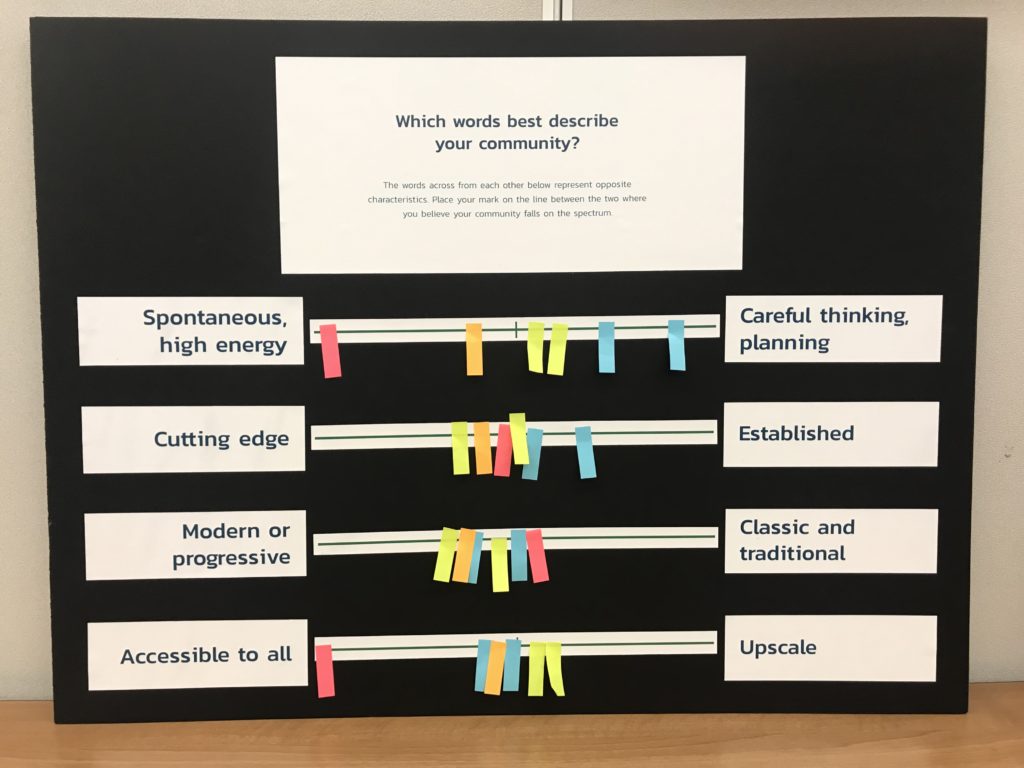
20 Jul Ensure Your Research is Inclusive of All Community Members
The foundation of an effective and meaningful community brand is a robust and inclusive research initiative.
These initiatives, which gather critical inputs from residents and other individuals, set the tone for uncovering a DNA that differentiates and best embodies your community’s spirit.
So when forming the plan for gathering input, it’s important that your channels for research are accessible to every member of the community. This approach not only provides a variety of perspectives sure to help create a stronger final product – it also ensures every resident feels heard and part of the process.
A community survey, focus groups and one-on-one interviews may not be enough. Those with a limited means of transportation, lack of internet connection or bias against surveys, for example, could be overlooked and left out.
As a result, you should be prepared to gather input through other methods. Below are a few examples to get you started.
Community Workshops
A workshop of this nature is a planned and organized event at a high-traffic area, such as city hall and community centers. These workshops typically begin with a short educational presentation on the larger branding initiative and are followed with a set of questions asked to the audience. The format is highly interactive.
These questions are typically presented differently than a survey or focus group in order to accommodate a larger group. For some communities, North Star sets up several poster boards across a conference hall or large meeting room, with one question asked on each board. Participants answer by placing Post-it notes across a spectrum or on their preferred answer.
For example, one poster board may ask, “should our community’s brand be bold or more subtle?” or “which one of these personas best embodies our community?” This type of event encourages activity and discussion among residents that can ultimately lead to even stronger input and help build community buy-in.

Survey Stations
For residents who may not have the time to participate in an organized community workshop, setting up survey stations – similar to polling stations – in these same high-traffic locations, or public facilities like a library or community center, offers another opportunity for them to share their perspectives.
In this setting, residents are provided with the same survey offered online to the wider community via a computer, iPad, paper or all of the above.
Community Events
Invest in a booth or tent at popular city or county events such as farmers markets, 5K races and concerts and offer your survey digitally and on paper. To help encourage participation, give something of value away to every individual who completes the questionnaire. You may also provide a small flyer with a QR code that links to the initiative’s website and survey.
Street Intercepts
You don’t always need an organized event or activation to gather community inputs. Consider deploying a team to (appropriately) ask residents on the street for their perspectives and answers to some of your most important questions. This tactic helps compile direct and authentic responses from a larger number of people, especially those who may have bias against surveys. Be sure the team executing the intercepts are respectful and mindful of those who may be in a hurry or not interested in participating.
Collaboration with Community or Neighborhood Ambassadors
Every neighborhood within a community has leaders that know their area and residents best. Work with these leaders early on in the process to help increase participation from residents in neighborhoods that may be more difficult to engage. These individuals will know where, when and how to reach their peers and encourage action.
Making your research effort accessible to every member of your community results in a more informed brand development process and a smoother introduction period.
So when you’re kicking off your research initiative, examine every pocket of your community and cater to the needs of residents with limited access. By doing so, you’re maximizing your chances at forming a successful brand and ensuring all members of the community embrace it over the long term.
